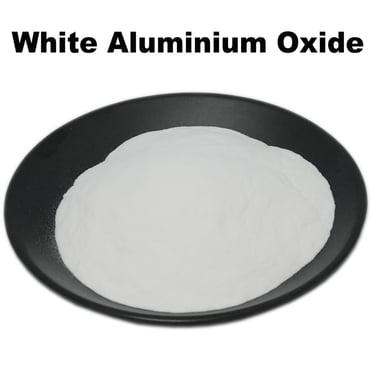Choosing the Right Grit Size of White Fused Alumina for Abrasive Paper
Learn how to select the optimal white fused alumina grit size for sandpaper manufacturing — balancing cutting power, surface finish, and cost efficiency.
XINLI ABRASIVE
10/16/20252 min read


Introduction
Selecting the correct grit size of white fused alumina (WFA) is one of the most critical steps in abrasive paper manufacturing. Grit size directly determines cutting performance, surface finish, and product life — making it essential for balancing performance and cost.
1. Understanding Grit Size Standards
White fused alumina grit sizes are classified according to FEPA (F) and JIS standards.
Coarse grits (F12–F46): Used for heavy material removal.
Medium grits (F60–F120): Suitable for general grinding and deburring.
Fine grits (F150–F320): Ideal for finishing and polishing.
Microgrits (F400–F1200): Used for precision or mirror finishing.
2. How Grit Size Affects Sandpaper Performance
White fused alumina grit sizes can be categorized into four main types — coarse, medium, fine, and micro — each suited for different surface finishing needs.
Coarse grits (F16–F36) feature fast cutting speed and are used for heavy-duty applications such as metal deburring and woodworking. They remove material quickly but leave a relatively rough surface.
Medium grits (F60–F120) provide a balanced performance between cutting power and surface quality. They are commonly applied in paint removal, rust cleaning, and general surface preparation tasks.
Fine grits (F150–F320) cut more slowly but deliver a smoother surface finish, making them ideal for polishing and intermediate finishing steps.
Finally, micro grits (F400–F800) are used for precision and optical polishing where an ultra-smooth, mirror-like surface is required, such as in electronics, glass, and semiconductor applications.
3. Factors to Consider When Selecting Grit Size
Base Material: Hard materials (metal, glass) require finer grit; soft materials (wood, plastic) use coarser grit.
Desired Finish: The smoother the finish, the finer the grit.
Coating Type: Closed-coat sandpapers need finer grits for consistent texture.
Production Cost: Finer grits cost more to produce but extend sandpaper life.
4. Example: Grit Selection in Sandpaper Plants
In a typical sandpaper manufacturing line, the choice of WFA grit size is customized:
F60–F80: For woodworking and metal preparation.
F120–F220: For surface finishing and primer sanding.
F400–F800: For precision polishing (e.g., electronics, optics).
Conclusion
Selecting the right grit size of white fused alumina is both a science and an art — it determines not just the cutting ability but the final surface quality and efficiency of production. By optimizing grit distribution, sandpaper manufacturers can achieve higher performance and cost savings simultaneously.


